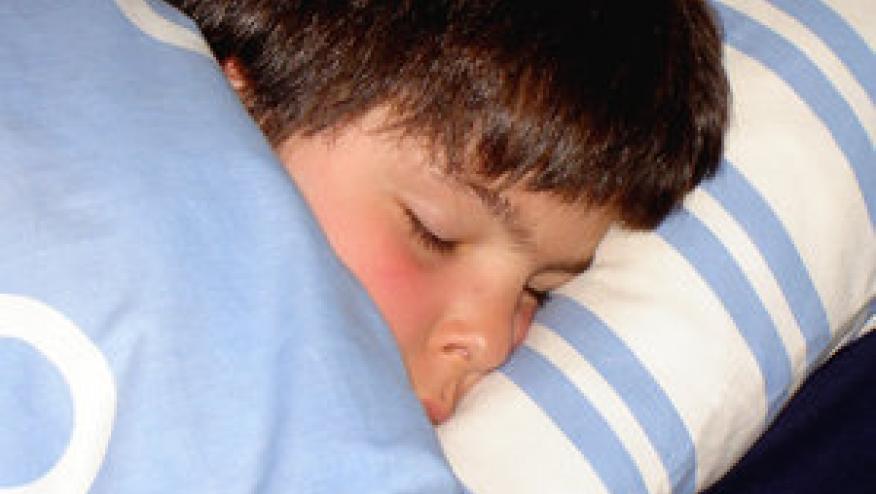Restless Sleep and Inactivity Intertwined in OA Save

Adults with osteoarthritis (OA) of the knee who frequently experienced restless sleep were less likely to engage in potentially beneficial moderate-to-vigorous physical activity, analysis of data from the Osteoarthritis Initiative found.
Individuals who reported restless sleep on 3-4 days in the previous week spent 14.9% fewer minutes engaged in physical activity compared with those who rarely or never experienced restless sleep (-14.9%, 95% CI -33.5% to 9%), while those with restless sleep on 5-7 days had 25.2% fewer minutes of weekly exercise (95% CI -43.1% to -1.7%, P=0.019 for trend), according to Abigail L. Gilbert, MD, of the University of North Carolina in Chapel Hill, and colleagues.
And after adjusting for age, sex, and race, the association became stronger, with differences of -23.8% (95% CI -38.5% to -5.6%) and -36.3% (95% CI -49.7% to -19.3%, P<0.001 for trend), they reported in Arthritis Care & Research.
They also implicated poor energy and high depressive symptoms as potential mediators for this relationship, because "adjusting for these variables largely attenuated the relationship between increased frequency of restless sleep and less time spent in moderate-vigorous physical activity," the researchers wrote.
More than half of people with knee OA experience sleep disturbances, which could relate to chronic pain, depression, and sedentary lifestyle. "Improving sleep quality may be a novel target to increase physical activity behavior; the relationship between sleep quality and physical activity may be bidirectional and improving physical activity may also benefit sleep," they hypothesized.
The Osteoarthritis Initiative enrolled almost 5,000 individuals who either had knee OA or were at risk for the condition because of factors such as older age, obesity, and prior knee injury or surgery. The current study included a subgroup of 1,892 who underwent at least 4 days of accelerometer monitoring.
Participants' mean age was 64, and most were white women.
A total of 7% reported that they had restless sleep most or all of the time (5-7 days in the last week), 8.9% said they had moderate sleep restlessness (3-4 days in the last week), 44.5% said the sleep problems occurred some of the time (1-2 days), and the remainder said they rarely or never had sleep difficulties.
Participants who rarely or never experienced restless sleep had a median of 79 minutes per week of moderately vigorous activity, while those with 3-4 days of restlessness had a median of 77 minutes and those with 5-7 days of restlessness had only 58 minutes per week.
Individuals with the highest level of sleep restlessness more often reported high depressive symptoms, with a score of 16 or higher on the modified Center for Epidemiologic Studies Depression Scale, at 40.2%, compared with only 3.6% of those with little or no restlessness.
The significantly lower time spent in moderate to vigorous physical activity persisted after further adjustment for BMI, Kellgren-Lawrence OA severity grade, and Charlson comorbidity index, with differences of -12.4% (95% CI -28.7% to 7.7%) for those with 3-4 days of restlessness and -20.4% (95% CI -36.8% to 0.3%) for those with restlessness on 5-7 days (P=0.020 for trend).
In calculating the effects of energy and depressive symptoms on the association between physical activity and restless sleep, the researchers found that after adjustment for these factors, those with 3-4 and 5-7 days of restlessness performed 2% and 1.8% more physical activity, respectively. "It is likely that increased depressive symptoms and low energy are both part of the causal pathway partially explaining the relationship between restless sleep and decreased physical activity," Gilbert's group wrote.
But it's also likely that physical inactivity may lead to restless sleep and a lack of energy and also may predispose patients to depression, so these relationships are likely to be complex, they noted.
"Future research should explore if improving sleep quality may help individuals experience fewer depressive symptoms and have more energy, resulting in more participation in physical activity," they concluded.
Study limitations included its cross-sectional design and the possibility of residual confounding.









If you are a health practitioner, you may Login/Register to comment.
Due to the nature of these comment forums, only health practitioners are allowed to comment at this time.